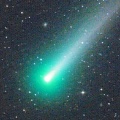
|
It brightened up to 3 mag in outburst on Dec. 14. Now it is bright as 3.8 mag (Dec. 25, Marco Goiato). It turns to be observable in the evening low sky after this. It stays 3-5 mag in December. It stays observable until early January in the Northern Hemisphere, or until late January in the Southern Hemisphere. In the Southern Hemisphere, it becomes observable in the morning sky after late February.
Date(TT) R.A. (2000) Decl. Delta r Elong. m1 Best Time(A, h)
Dec. 25 21 5.35 -33 23.5 0.566 0.648 38 5.4 18:25 ( 42, 5)
Jan. 1 21 33.91 -35 25.8 0.832 0.617 38 6.0 18:29 ( 42, 3)
|

|
Now it is very bright as 9.1 mag (Dec. 26, Marco Goiato). It stays 9 mag until January, and it is observable in good condition. A very long dust trail is detected.
Date(TT) R.A. (2000) Decl. Delta r Elong. m1 Best Time(A, h)
Dec. 25 9 2.04 28 9.1 0.461 1.377 141 9.0 2:49 ( 0, 83)
Jan. 1 8 59.04 28 34.4 0.481 1.418 149 9.2 2:19 ( 0, 83)
|
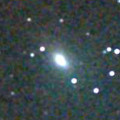
|
Now it is bright as 9.6 mag (Dec. 25, Marco Goiato). It stays bright as 9-10 mag until March. In the Southern Hemisphere, it is observable in excellent condition. It will be getting higher rapidly after this also in the Northren Hemisphere.
Date(TT) R.A. (2000) Decl. Delta r Elong. m1 Best Time(A, h)
Dec. 25 0 4.66 -23 3.7 1.179 1.386 79 9.4 18:25 ( 9, 32)
Jan. 1 0 17.96 -18 12.3 1.185 1.361 77 9.2 18:29 ( 16, 36)
|

|
Now it is 9.7 mag (Dec. 26, Marco Goiato). It stays bright as 10 mag until spring for a long time. It stays observable in good condition for a long time. It locates somewhat low in the Southern Hemisphere,
Date(TT) R.A. (2000) Decl. Delta r Elong. m1 Best Time(A, h)
Dec. 25 7 19.90 34 8.9 2.609 3.557 161 9.8 1:08 ( 0, 89)
Jan. 1 7 12.66 32 56.3 2.587 3.555 168 9.8 0:33 ( 0, 88)
|
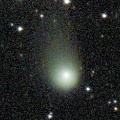
|
Now it is bright as 11.9 mag (Dec. 2, Ken-ichi Kadota). It is expected to be observable at 5-6 mag for a long time from 2022 to 2023. In the Northern Hemisphere, it becomes extremely low temporarily in December, but it will be getting higher again after January. However, it is not observable at the high light from 2022 autumn to 2023 summer. In the Southern Hemisphere, it is not observable until February. But it will be observable in good condition at the high light.
Date(TT) R.A. (2000) Decl. Delta r Elong. m1 Best Time(A, h)
Dec. 25 17 51.93 13 50.7 5.197 4.458 37 11.1 5:35 (258, 7)
Jan. 1 17 57.59 13 17.3 5.127 4.396 38 11.0 5:37 (262, 12)
|
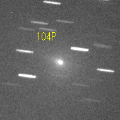
|
Brightened very rapidly. Now it is very bright as 11.0 mag (Dec. 20, Michael Jager). It is observable at 11 mag in good condition from December to February.
Date(TT) R.A. (2000) Decl. Delta r Elong. m1 Best Time(A, h)
Dec. 25 23 39.82 -6 39.9 0.699 1.099 79 11.2 18:25 ( 22, 46)
Jan. 1 0 4.82 -5 9.0 0.682 1.083 78 11.0 18:29 ( 25, 47)
|
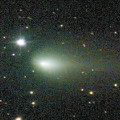
|
Now it is bright as 11.5 mag (Dec. 18, Seiichi Yoshida). It stays observable in good condition for a long time. But it will be fading gradually after this.
Date(TT) R.A. (2000) Decl. Delta r Elong. m1 Best Time(A, h)
Dec. 25 6 39.97 7 9.3 0.979 1.939 162 11.5 0:27 ( 0, 62)
Jan. 1 6 34.23 7 25.2 1.012 1.976 164 11.7 23:49 ( 0, 62)
|
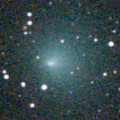
|
Now it is bright as 10.6 mag (Nov. 27, Marco Goiato). It is observable at 10 mag in good condition from October to December.
Date(TT) R.A. (2000) Decl. Delta r Elong. m1 Best Time(A, h)
Dec. 25 23 38.55 -21 24.0 1.730 1.739 74 11.6 18:25 ( 17, 32)
Jan. 1 23 56.32 -19 27.3 1.827 1.785 71 12.1 18:29 ( 21, 33)
|

|
In the Northern Hemisphere, it stays extremely low until spring. In the Southern Hemisphere, it will appear in the morning sky at 11 mag in late January, then it stays observable at 11 mag until June.
Date(TT) R.A. (2000) Decl. Delta r Elong. m1 Best Time(A, h)
Dec. 25 16 30.66 -18 54.7 2.610 1.761 24 12.5 5:35 (297, 4)
Jan. 1 16 51.28 -19 39.0 2.553 1.730 26 12.3 5:37 (299, 5)
|
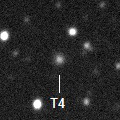
|
Now it is 13.4 mag (Dec. 14, Chris Wyatt). It will brighten up to 11.5 mag in spring. It stas observable in good condition for a long time.
Date(TT) R.A. (2000) Decl. Delta r Elong. m1 Best Time(A, h)
Dec. 25 11 57.46 -29 14.5 4.489 4.461 82 12.5 5:35 (358, 26)
Jan. 1 12 0.91 -29 28.6 4.374 4.443 87 12.4 5:20 ( 0, 25)
|

|
Now it is 15.2 mag (Dec. 1, Ken-ichi Kadota). It will brighten up to 12 mag from winter to spring. It is appearing in the morning sky also in the Southern Hemisphere.
Date(TT) R.A. (2000) Decl. Delta r Elong. m1 Best Time(A, h)
Dec. 25 15 17.69 -12 50.0 2.269 1.687 42 13.1 5:35 (304, 21)
Jan. 1 15 37.51 -14 23.6 2.206 1.662 44 13.0 5:37 (307, 22)
|

|
Major outburst occured on Sept. 25, and it brightened up to 10.0 mag (Oct. 1, Toshihiko Ikemura, Hirohisa Sato). Now it is fading. But it is bright as 10.8 mag still now (Dec. 2, Toshihiko Ikemura, Hirohisa Sato).
Date(TT) R.A. (2000) Decl. Delta r Elong. m1 Best Time(A, h)
Dec. 25 4 24.81 31 16.2 5.038 5.942 154 13.3 22:08 ( 0, 86)
Jan. 1 4 21.85 31 0.9 5.092 5.944 147 13.3 21:38 ( 0, 86)
|
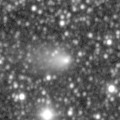
|
Major outburst occured on Oct. 17. Now it is very bright as 11.9 mag (Nov. 27, Toshihiko Ikemura, Hirohisa Sato). In the Southern Hemisphere, it becomes unobservable soon. In the Northern Hemisphere, it stays observable until early February.
Date(TT) R.A. (2000) Decl. Delta r Elong. m1 Best Time(A, h)
Dec. 25 21 17.49 -14 38.3 2.404 1.832 44 13.4 18:25 ( 53, 21)
Jan. 1 21 35.68 -13 19.3 2.470 1.854 41 13.7 18:29 ( 57, 20)
|

|
It brightened very rapidly, and brightened up to 8.9 mag (Sept. 11, Chris Wyatt). Now it is fading. It has already faded down to 15.7 mag (Dec. 7, E. Cortes, N. Paul, B. Lutkenhoner). In the Southern Hemisphere, it stays observable after this while the comet will be fading. But it stays locating low. It is not observable after this in the Northern Hemisphere.
Date(TT) R.A. (2000) Decl. Delta r Elong. m1 Best Time(A, h)
Dec. 25 15 37.44 -52 42.0 2.578 1.955 41 13.7 5:35 (329,-11)
Jan. 1 15 57.58 -53 15.7 2.622 2.027 43 14.0 5:37 (330,-10)
|

|
It brightened up to 9.5 mag in early summer (June 27, Marco Goiato). Now it is fading. It has already faded down to 12.7 mag (Nov. 22, Thomas Lehmann). Now it is not observable. In the Southern Hemisphere, it will appear in the morning sky at 15 mag in late February. In the Northern Hemisphere, it is not observable until June when the comet will fade down to 17 mag.
Date(TT) R.A. (2000) Decl. Delta r Elong. m1 Best Time(A, h)
Dec. 25 19 24.69 -33 18.7 3.736 2.821 18 13.7 18:25 ( 56,-10)
Jan. 1 19 39.50 -33 19.9 3.807 2.874 15 13.9 18:29 ( 58,-13)
|

|
It brightened up to 12.3 mag from spring to summer (June 15, Marco Goiato). Now it is fading. It has already faded down to 14.2 mag (Dec. 10, Ken-ichi Kadota). It is appearing in the morning sky also in the Southern Hemisphere.
Date(TT) R.A. (2000) Decl. Delta r Elong. m1 Best Time(A, h)
Dec. 25 14 27.83 3 16.7 4.457 4.073 61 14.0 5:35 (302, 41)
Jan. 1 14 28.64 4 18.4 4.374 4.109 68 14.0 5:37 (308, 47)
|

|
Now it is 15.1 mag (Dec. 14, Chris Wyatt). It is expected to brighten up to 13 mag in 2022. In the Southern Hemisphere, it stays observable in good condition for a long time. In the Northern Hemisphere, it becomes observable temporarily in the extremely low sky in December. But it becomes unobservable again soon.
Date(TT) R.A. (2000) Decl. Delta r Elong. m1 Best Time(A, h)
Dec. 25 12 48.38 -50 22.4 3.824 3.553 66 14.4 5:35 (350, 4)
Jan. 1 12 45.78 -52 52.6 3.706 3.522 71 14.3 5:37 (356, 2)
|

|
It brightened up to 13.1 mag in autumn (Oct. 28, Toshihiko Ikemura, Hirohisa Sato). Now it is fading. But it is bright as 14.5 mag still now (Dec. 5, Thomas Lehmann). It stays observable in good condition for a long time. But it will be fainter than 18 mag in March.
Date(TT) R.A. (2000) Decl. Delta r Elong. m1 Best Time(A, h)
Dec. 25 1 26.15 1 38.7 1.175 1.742 107 14.7 19:11 ( 0, 57)
Jan. 1 1 38.44 2 57.9 1.246 1.759 103 14.9 18:56 ( 0, 58)
|
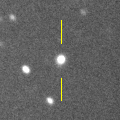
|
Now it is 14.1 mag (Nov. 28, Toshihiko Ikemura, Hirohisa Sato). It is expected to brighten up to 10 mag in 2023. In the Northern Hemisphere, it stays observable in good condition until 2023 autumn. In the Southern Hemipshere, it locates extremely low from January to February. Then it stays unobservable until 2023 summer.
Date(TT) R.A. (2000) Decl. Delta r Elong. m1 Best Time(A, h)
Dec. 25 13 5.86 40 2.8 5.369 5.551 95 15.1 5:35 (247, 74)
Jan. 1 13 6.72 41 21.7 5.221 5.495 101 15.0 5:37 (233, 79)
|

|
Now it is 15.4 mag (Dec. 3, Toshihiko Ikemura, Hirohisa Sato). It will brighten rapidly, and it will be observable at 13.5 mag in good condition from winter to spring.
Date(TT) R.A. (2000) Decl. Delta r Elong. m1 Best Time(A, h)
Dec. 25 10 8.02 16 28.0 1.904 2.594 124 15.2 3:55 ( 0, 71)
Jan. 1 10 9.18 16 30.8 1.810 2.571 131 15.0 3:28 ( 0, 71)
|

|
Now it is 15.8 mag (Oct. 4, Thomas Lehmann). Appearing in the morning. It will brighten up to 13 mag in summer.
Date(TT) R.A. (2000) Decl. Delta r Elong. m1 Best Time(A, h)
Dec. 25 16 31.12 -22 18.2 4.063 3.186 23 15.1 5:35 (299, 2)
Jan. 1 16 42.21 -22 50.0 4.010 3.177 28 15.1 5:37 (302, 5)
|
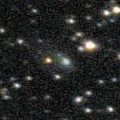
|
Now it is 14.9 mag (Nov. 28, Thomas Lehmann). It is expected to brighten up to 11 mag from spring to summer in 2022. In the Southen Hemisphere, it is not observable until February, but it stays observable in good condition for a long time after that. In the Northern Hemisphere, it is hardly observable after this.
Date(TT) R.A. (2000) Decl. Delta r Elong. m1 Best Time(A, h)
Dec. 25 19 10.37 -5 59.6 3.624 2.738 22 15.2 18:25 ( 81, 3)
Jan. 1 19 16.36 -7 13.9 3.598 2.677 17 15.1 18:29 ( 83, -3)
|

|
Now it is 16.0 mag (Dec. 5, Thomas Lehmann). It will brighten up to 12.5 mag in 2022 summer. In the Southern Hemisphere, it stays observable in excellent condition for a long time. In the Northern Hemisphere, it is not observable until August.
Date(TT) R.A. (2000) Decl. Delta r Elong. m1 Best Time(A, h)
Dec. 25 22 21.36 -66 27.1 4.363 3.924 57 15.1 18:25 ( 14,-15)
Jan. 1 22 19.20 -64 56.2 4.375 3.882 54 15.1 18:29 ( 18,-15)
|

|
Now it is 15.8 mag (Dec. 16, D. Buczynski). It is expected to brighten up to 11 mag in 2023. In the Northern Hemisphere, it stays observable in good condition for a long time. It is not observable in the Southern Hemisphere.
Date(TT) R.A. (2000) Decl. Delta r Elong. m1 Best Time(A, h)
Dec. 25 16 33.32 30 54.6 5.825 5.391 59 15.2 5:35 (252, 31)
Jan. 1 16 35.82 31 0.7 5.736 5.349 62 15.1 5:37 (255, 37)
|

|
It brightened rapidly. Now it is 15.1 mag (Dec. 5, Hiroshi Abe). It is observable at 15 mag in excellent condition in winter.
Date(TT) R.A. (2000) Decl. Delta r Elong. m1 Best Time(A, h)
Dec. 25 8 36.89 16 15.6 1.617 2.491 145 15.1 2:24 ( 0, 71)
Jan. 1 8 32.74 15 48.0 1.580 2.499 153 15.1 1:52 ( 0, 71)
|
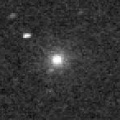
|
It was observed at 9-10 mag from late July to early August. Although it had been unobservable for a long time, it is appearing in the morning sky now.
Date(TT) R.A. (2000) Decl. Delta r Elong. m1 Best Time(A, h)
Dec. 25 15 43.91 -20 59.7 3.074 2.332 34 15.1 5:35 (306, 11)
Jan. 1 15 53.50 -22 5.4 3.101 2.423 39 15.3 5:37 (310, 13)
|

|
Now it is 15.9 mag (Oct. 8, Thomas Lehmann). It stays at 14-15 mag for a long time from 2021 to 2022. It is not observable from November to January.
Date(TT) R.A. (2000) Decl. Delta r Elong. m1 Best Time(A, h)
Dec. 25 16 58.93 -28 16.6 5.938 5.009 17 15.4 5:35 (300, -7)
Jan. 1 17 2.60 -29 6.2 5.899 5.014 23 15.4 5:37 (304, -3)
|
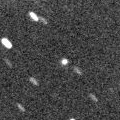
|
Now it is 16.9 mag (Dec. 1, Toshihiko Ikemura, Hirohisa Sato). It is expected to brighten up to 4.5 mag in 2022 April. However, it is not observable at the high light. In the Northern Hemisphere, it stays observable until early February when it brightens up to 14 mag. Then it will appear at 6 mag in mid May, and it stays observable in good condition after that while the comet will be fading. In the Southern Hemisphere, it stays observable until December when it brightens up to 16 mag. But after that, it is not observable until 2022 August.
Date(TT) R.A. (2000) Decl. Delta r Elong. m1 Best Time(A, h)
Dec. 25 22 8.93 3 59.7 2.649 2.379 63 15.9 18:25 ( 57, 43)
Jan. 1 22 14.72 3 9.4 2.646 2.275 57 15.7 18:29 ( 62, 38)
|
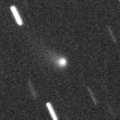
|
Now it is 15.3 mag (Dec. 5, Hiroshi Abe). In the Northern Hemisphere, it stays observable at 15-16 mag for a long time until early 2022. It is appearing in the morning sky also in the Southern Hemisphere.
Date(TT) R.A. (2000) Decl. Delta r Elong. m1 Best Time(A, h)
Dec. 25 13 18.34 14 57.6 3.249 3.255 81 15.7 5:35 (309, 61)
Jan. 1 13 16.17 14 18.8 3.157 3.282 88 15.7 5:37 (324, 65)
|

|
Now it is 15.4 mag (Dec. 6, Thomas Lehmann). It will be fading after this. In the Southern Hemisphere, it stays observable in good condition for a long time. It locates low in the Northern Hemisphere.
Date(TT) R.A. (2000) Decl. Delta r Elong. m1 Best Time(A, h)
Dec. 25 22 35.58 -16 20.5 5.272 4.881 61 15.8 18:25 ( 35, 31)
Jan. 1 22 39.20 -15 12.7 5.394 4.907 55 15.9 18:29 ( 43, 28)
|
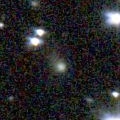
|
Now it is 16.0 mag (Dec. 8, A. Diepvens). It is expected to brighten up to 11 mag in 2023. In the Northern Hemisphere, it stays observable in good condition until 2022 November. But it becomes unobservable after that. In the Southern Hemisphere, it is not observable until February. But it will be observable in good condition at the high light.
Date(TT) R.A. (2000) Decl. Delta r Elong. m1 Best Time(A, h)
Dec. 25 18 11.77 19 10.6 6.204 5.520 42 15.9 5:35 (251, 6)
Jan. 1 18 16.65 18 41.5 6.159 5.472 42 15.8 5:37 (255, 11)
|
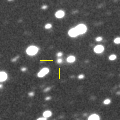
|
First return of a new periodic comet observed at 16 mag from 2003 to 2004. Now it is 16.0 mag (Nov. 27, Toshihiko Ikemura, Hirohisa Sato). It stays 16 mag until March, and it stays observable in excellent condition.
Date(TT) R.A. (2000) Decl. Delta r Elong. m1 Best Time(A, h)
Dec. 25 6 22.06 2 38.6 3.004 3.938 159 15.8 0:09 ( 0, 58)
Jan. 1 6 17.77 3 19.9 3.004 3.939 159 15.8 23:33 ( 0, 58)
|

|
Now it is 15.1 mag (Nov. 10, Ken-ichi Kadota). It will be fading after this. In the Northern Hemisphere, it stays observable in good condition for a long time, although it became extremely low temporarily in November. In the Southern Hemisphere, it is not observable until late January.
Date(TT) R.A. (2000) Decl. Delta r Elong. m1 Best Time(A, h)
Dec. 25 16 13.57 18 56.1 2.990 2.498 51 15.8 5:35 (267, 30)
Jan. 1 16 13.51 19 53.3 2.934 2.529 56 15.9 5:37 (270, 36)
|

|
Now it is 16.3 mag (Nov. 30, E. Cortes, N. Paul, B. Lutkenhoner). It will be fading slowly after this. In the Southern Hemisphere, it stays observable in good condition for a long time. In the Northern Hemisphere, it is not observable until July.
Date(TT) R.A. (2000) Decl. Delta r Elong. m1 Best Time(A, h)
Dec. 25 23 0.48 -56 24.7 4.352 3.964 60 15.9 18:25 ( 14, -4)
Jan. 1 23 10.14 -54 24.5 4.426 3.990 57 15.9 18:29 ( 17, -3)
|

|
Now it is 15.4 mag (Nov. 21, ATLAS-MLO, Mauna Loa). It will be fading slowly after this. It will be unobservable soon.
Date(TT) R.A. (2000) Decl. Delta r Elong. m1 Best Time(A, h)
Dec. 25 20 54.72 -29 7.7 4.014 3.275 36 15.9 18:25 ( 47, 7)
Jan. 1 21 5.50 -28 25.1 4.083 3.291 32 16.0 18:29 ( 51, 4)
|

|
Brightened rapidly. Now it is 15.7 mag (Nov. 27, Toshihiko Ikemura, Hirohisa Sato). It is observable at 15.5-16 mag in good condition until winter.
Date(TT) R.A. (2000) Decl. Delta r Elong. m1 Best Time(A, h)
Dec. 25 2 3.39 11 23.5 3.222 3.805 119 15.9 19:47 ( 0, 66)
Jan. 1 2 4.91 11 15.1 3.318 3.808 112 16.0 19:21 ( 0, 66)
|
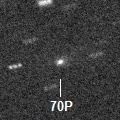
|
Now it is 16.7 mag (Dec. 11, Toshihiko Ikemura, Hirohisa Sato). It will brighten up to 15.5 mag, and will be observable in excellent condition in winter.
Date(TT) R.A. (2000) Decl. Delta r Elong. m1 Best Time(A, h)
Dec. 25 11 29.12 6 57.8 1.595 2.053 102 16.1 5:15 ( 0, 62)
Jan. 1 11 36.73 6 44.6 1.535 2.065 108 16.0 4:55 ( 0, 62)
|
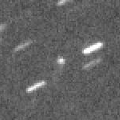
|
Now it is 16.6 mag (Dec. 10, ATLAS-MLO, Mauna Loa). It will brighten up to 16 mag in 2022. In the Northern Hemisphere, it stays observable in good condition for a long time. In the Southern Hemisphere, it is not observable until 2023.
Date(TT) R.A. (2000) Decl. Delta r Elong. m1 Best Time(A, h)
Dec. 25 10 58.99 85 0.6 3.395 3.912 114 16.1 4:46 (180, 40)
Jan. 1 11 44.09 87 42.2 3.396 3.896 113 16.1 5:02 (180, 37)
|
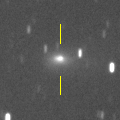
|
It brightened even after the perihelion passage. Now it is very bright as 13.5 mag (Dec. 6, Katsumi Yoshimoto). It is observable in excellent condition in the Northern Hemisphere. It locates low in the Southern Hemisphere.
Date(TT) R.A. (2000) Decl. Delta r Elong. m1 Best Time(A, h)
Dec. 25 7 10.43 39 32.3 0.999 1.952 159 16.3 0:58 (180, 86)
Jan. 1 7 3.13 40 16.2 1.027 1.986 162 16.5 0:23 (180, 85)
|
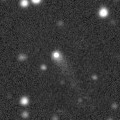
|
It stays observable at 16 mag from 2021 to 2022. Appearing in the morning sky in the Northern Hemisphere. In the Southern Hemisphere, it will appear in the morning sky in January.
Date(TT) R.A. (2000) Decl. Delta r Elong. m1 Best Time(A, h)
Dec. 25 15 37.51 9 5.4 5.321 4.751 50 16.3 5:35 (282, 32)
Jan. 1 15 43.33 10 1.1 5.250 4.759 55 16.3 5:37 (286, 37)
|
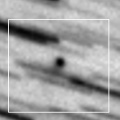
|
Now it is 16.0 mag (Dec. 13, R. Naves, M. Campas). It is expected to brighten up to 11 mag in 2022 summer. In the Northern Hemisphere, it stays observable in good condition until June when it brightens up to 11 mag. But it is not observable after the high light. In the Souther Hemisphere, it is not observable until October.
Date(TT) R.A. (2000) Decl. Delta r Elong. m1 Best Time(A, h)
Dec. 25 22 34.30 53 22.2 2.994 3.233 95 16.5 18:25 (140, 61)
Jan. 1 22 38.38 52 32.9 2.981 3.156 91 16.4 18:29 (135, 58)
|
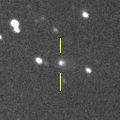
|
Now it is 15.8 mag (Nov. 27, Toshihiko Ikemura, Hirohisa Sato). It continues brightening even after the perihelion passage. It stays observable at 16-17 mag in good condition for a while.
Date(TT) R.A. (2000) Decl. Delta r Elong. m1 Best Time(A, h)
Dec. 25 4 32.17 -14 37.8 3.141 3.895 134 16.7 22:15 ( 0, 40)
Jan. 1 4 28.59 -13 47.6 3.204 3.913 130 16.7 21:44 ( 0, 41)
|

|
It has not been observed yet in this return. It will brighten up to 16.5 mag in January. It locates low in the evening.
Date(TT) R.A. (2000) Decl. Delta r Elong. m1 Best Time(A, h)
Dec. 25 21 39.26 -22 27.0 1.599 1.176 47 16.8 18:25 ( 44, 19)
Jan. 1 22 4.91 -18 52.2 1.592 1.164 46 16.7 18:29 ( 47, 21)
|

|
Now it is 16.4 mag (Nov. 14, F. Kugel, M. Audejean, J. Nicolas, J.-G. Bosch). It brightened rapidly. It stays 17 mag for a long time from 2021 to 2022. In the Southern Hemisphere, it stays observable in good condition for a long time. In the Northern Hemisphere, it will be observable only in extremely low sky from autumn to winter.
Date(TT) R.A. (2000) Decl. Delta r Elong. m1 Best Time(A, h)
Dec. 25 8 37.29 -42 46.5 4.985 5.341 106 16.7 2:24 ( 0, 12)
Jan. 1 8 28.83 -44 0.5 4.945 5.344 108 16.7 1:48 ( 0, 11)
|
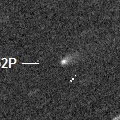
|
Now it is 16.7 mag (Dec. 3, Toshihiko Ikemura, Hirohisa Sato). It stays observable at 17 mag from autumn to winter.
Date(TT) R.A. (2000) Decl. Delta r Elong. m1 Best Time(A, h)
Dec. 25 12 23.90 -2 22.0 1.720 1.931 86 16.8 5:35 (346, 52)
Jan. 1 12 32.38 -3 57.1 1.671 1.957 91 16.8 5:37 (355, 51)
|
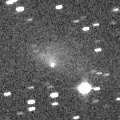
|
It brightened up to 10.1 mag in spring (Apr. 10, Marco Goiato). Now it is fading. It has already faded down to 16.3 mag (Dec. 10, Toshihiko Ikemura, Hirohisa Sato). It stays observable in good condition for a long time after this while the comet will fading.
Date(TT) R.A. (2000) Decl. Delta r Elong. m1 Best Time(A, h)
Dec. 25 3 49.57 6 39.7 1.972 2.810 141 16.8 21:33 ( 0, 62)
Jan. 1 3 46.32 7 12.9 2.074 2.850 134 17.0 21:02 ( 0, 62)
|

|
Now it is 16.5 mag (Nov. 29, Toshihiko Ikemura, Hirohisa Sato). Fading slowly. In the Northern Hemisphere, it stays observable in good condition for a long time. In the Southern Hemisphere, it is not observable after this.
Date(TT) R.A. (2000) Decl. Delta r Elong. m1 Best Time(A, h)
Dec. 25 18 45.04 47 26.3 9.249 8.980 71 16.8 18:25 (131, 26)
Jan. 1 18 48.80 47 44.3 9.263 8.988 70 16.8 18:29 (134, 22)
|

|
First return of a new periodic comet which brightened up to 17 mag in 2011. Now it is 17.2 mag (Dec. 13, Catalina Sky Survey). It stays observable at 17 mag in good condition until spring.
Date(TT) R.A. (2000) Decl. Delta r Elong. m1 Best Time(A, h)
Dec. 25 13 21.10 -3 53.9 1.546 1.570 72 16.9 5:35 (326, 45)
Jan. 1 13 37.87 -5 32.1 1.507 1.581 75 16.9 5:37 (331, 45)
|
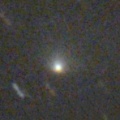
|
It brightened up to 14.5 mag in autumn (Oct. 1, Ken-ichi Kadota). Now it is fading. It has already faded down to 16.3 mag (Nov. 27, Toshihiko Ikemura, Hirohisa Sato). It will be fading rapidly after this. It will be fainter than 18 mag in February.
Date(TT) R.A. (2000) Decl. Delta r Elong. m1 Best Time(A, h)
Dec. 25 23 58.37 -11 10.7 2.331 2.403 82 17.0 18:25 ( 14, 43)
Jan. 1 0 7.83 -10 2.2 2.428 2.418 77 17.1 18:29 ( 22, 43)
|

|
Now it is 17.6 mag (Dec. 4, Ken-ichi Kadota). It stays observable in good condition for a long time. But it will be fading after this.
Date(TT) R.A. (2000) Decl. Delta r Elong. m1 Best Time(A, h)
Dec. 25 23 45.25 8 0.3 2.178 2.339 86 17.0 18:25 ( 28, 60)
Jan. 1 23 54.82 8 58.7 2.279 2.358 82 17.1 18:29 ( 39, 59)
|
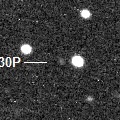
|
Now it is 18.5 mag (Nov. 28, Toshihiko Ikemura, Hirohisa Sato). It is expected to brighten up to 16.5-17 mag in winter. In its last apparition in 2015, it brightened up to 13 mag. But actually, it is fainter than this ephemeris recently.
Date(TT) R.A. (2000) Decl. Delta r Elong. m1 Best Time(A, h)
Dec. 25 23 9.67 -21 3.5 1.900 1.778 67 17.1 18:25 ( 24, 30)
Jan. 1 23 23.66 -19 9.8 1.927 1.748 64 17.0 18:29 ( 30, 30)
|
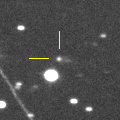
|
Now it is 16.7 mag (Nov. 27, Toshihiko Ikemura, Hirohisa Sato). It will brighten up to 14 mag in early 2023. It stays observable in good condition until spring.
Date(TT) R.A. (2000) Decl. Delta r Elong. m1 Best Time(A, h)
Dec. 25 4 27.19 2 55.3 4.150 5.004 147 17.1 22:11 ( 0, 58)
Jan. 1 4 24.30 3 14.0 4.160 4.961 140 17.1 21:40 ( 0, 58)
|
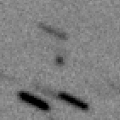
|
Now it is 17.5 mag (Dec. 13, ATLAS-MLO, Mauna Loa). It is observable at 17 mag from November to March. It is observable in good condition in the Northern Hemisphere, but it locates low in the Southern Hemisphere.
Date(TT) R.A. (2000) Decl. Delta r Elong. m1 Best Time(A, h)
Dec. 25 5 39.46 26 33.4 1.589 2.566 171 17.1 23:23 ( 0, 82)
Jan. 1 5 33.50 27 19.9 1.594 2.552 163 17.1 22:49 ( 0, 82)
|

|
It was expected to brighten up to 14.5 mag from spring to summer. But actually, it is fainter than expected. Now it is 16.4 mag (Oct. 4, ATLAS-MLO, Mauna Loa). In the Southern Hemisphere, it stays observable for a long time. In the Northern Hemisphere, it is not observable after this.
Date(TT) R.A. (2000) Decl. Delta r Elong. m1 Best Time(A, h)
Dec. 25 11 55.26 -54 22.7 3.808 3.657 73 17.1 5:35 (359, 0)
Jan. 1 11 50.27 -54 40.1 3.767 3.704 78 17.1 5:09 ( 0, 0)
|

|
Now it is 16.7 mag (Dec. 1, Toshihiko Ikemura, Hirohisa Sato). Fading slowly. It is not observable until April in the Southern Hemisphere.
Date(TT) R.A. (2000) Decl. Delta r Elong. m1 Best Time(A, h)
Dec. 25 21 38.05 19 15.5 6.643 6.301 65 17.1 18:25 ( 81, 47)
Jan. 1 21 40.55 18 30.9 6.755 6.318 59 17.2 18:29 ( 85, 41)
|
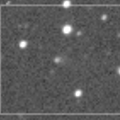
|
First return of a new periodic comet which brightened up to 17 mag in 2006. Now it is 17.2 mag (Nov. 23, ATLAS-HKO, Haleakala). It stays 17 mag from 2021 to 2022. In the Southern Hemisphere, it stays observable in good condition for a while. It locates extremely low in the Northern Hemisphere.
Date(TT) R.A. (2000) Decl. Delta r Elong. m1 Best Time(A, h)
Dec. 25 22 42.72 -39 39.5 3.511 3.108 58 17.1 18:25 ( 23, 11)
Jan. 1 22 51.97 -37 35.5 3.575 3.106 54 17.2 18:29 ( 28, 11)
|

|
Now it is 17.2 mag (Nov. 28, Toshihiko Ikemura, Hirohisa Sato). It stays 17-18 mag for a long time from 2021 to 2022. It is observable in excellent condition in the Northern Hemisphere, It locates somewhat low in the Southern Hemisphere.
Date(TT) R.A. (2000) Decl. Delta r Elong. m1 Best Time(A, h)
Dec. 25 3 22.41 31 51.7 4.606 5.409 141 17.2 21:06 ( 0, 87)
Jan. 1 3 13.39 31 11.6 4.686 5.402 132 17.2 20:29 ( 0, 86)
|

|
Now it is 17.8 mag (Aug. 4, ATLAS-HKO, Haleakala). It stays observable at 17-18 mag for a long time until 2024.
Date(TT) R.A. (2000) Decl. Delta r Elong. m1 Best Time(A, h)
Dec. 25 14 38.50 -5 36.9 9.429 8.896 54 17.4 5:35 (307, 33)
Jan. 1 14 38.99 -5 27.4 9.316 8.890 61 17.3 5:37 (314, 38)
|
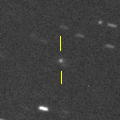
|
Now it is 17.4 mag (Dec. 12, J.-G. Bosch, F. Kugel, J. Nicolas). It will brighten up to 11.5 mag in 2022 winter. It stays observable while the comet will be brightening slowly.
Date(TT) R.A. (2000) Decl. Delta r Elong. m1 Best Time(A, h)
Dec. 25 3 2.42 12 57.4 2.545 3.302 133 17.4 20:46 ( 0, 68)
Jan. 1 2 59.57 12 53.5 2.590 3.265 125 17.4 20:16 ( 0, 68)
|
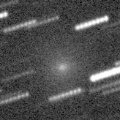
|
Bright new periodic comet. It brightened up to 12.7 mag in autumn (Oct. 9, Thomas Lehmann). It stays observable in good condition for a long time. But it is fading rapidly, and it will be fainter than 18 mag in January.
Date(TT) R.A. (2000) Decl. Delta r Elong. m1 Best Time(A, h)
Dec. 25 11 15.12 -10 25.1 1.381 1.816 98 17.4 5:01 ( 0, 44)
Jan. 1 11 17.78 -11 32.4 1.358 1.869 104 17.6 4:37 ( 0, 43)
|
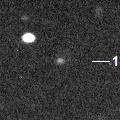
|
Now it is 16.9 mag (Dec. 1, Toshihiko Ikemura, Hirohisa Sato). It will brighten up to 15 mag in 2022 winter. It will be unobservable in February.
Date(TT) R.A. (2000) Decl. Delta r Elong. m1 Best Time(A, h)
Dec. 25 23 0.86 -13 32.2 3.003 2.792 68 17.4 18:25 ( 30, 36)
Jan. 1 23 8.95 -12 32.5 3.066 2.768 63 17.4 18:29 ( 37, 34)
|

|
Now it is 17.6 mag (Dec. 11, Toshihiko Ikemura, Hirohisa Sato). It was expected to brighten up to 15.5 mag in winter. But actually, it is fading even before the perihelion passage. In the Northern Hemisphere, it stays observable in good condition for a long time. It is not observable at all in the Southern Hemisphere.
Date(TT) R.A. (2000) Decl. Delta r Elong. m1 Best Time(A, h)
Dec. 25 16 24.65 68 19.4 2.742 2.975 93 17.4 5:35 (207, 40)
Jan. 1 16 30.66 70 27.1 2.690 2.966 96 17.4 5:37 (204, 42)
|

|
Now it is 17.3 mag (Dec. 4, Toshihiko Ikemura, Hirohisa Sato). In the Northern Hemisphere, it stays observable for a long time while it is getting fainter slowly. In the Southern Hemisphere, it will never be observable again.
Date(TT) R.A. (2000) Decl. Delta r Elong. m1 Best Time(A, h)
Dec. 25 14 48.10 41 5.2 7.516 7.411 80 17.4 5:35 (247, 55)
Jan. 1 14 50.31 41 21.3 7.494 7.459 84 17.5 5:37 (247, 60)
|
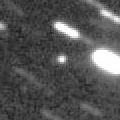
|
Now it is 16.3 mag (Dec. 2, Toshihiko Ikemura, Hirohisa Sato). In the Northern Hemisphere, it stays observable in good condition after this while the comet will be fading. In the Southern Hemisphere, it stays locating extremely low for a long time.
Date(TT) R.A. (2000) Decl. Delta r Elong. m1 Best Time(A, h)
Dec. 25 4 22.33 41 21.8 2.525 3.416 150 17.4 22:06 (180, 84)
Jan. 1 4 17.57 40 44.3 2.622 3.470 144 17.6 21:34 (180, 84)
|

|
It brightened very rapidly up to 10.7 mag in July (July 20, Osamu Miyazaki). Now it is fading. It has already faded down to 17.6 mag (Dec. 2, Toshihiko Ikemura, Hirohisa Sato). It stays observable in the morning sky for a long time.
Date(TT) R.A. (2000) Decl. Delta r Elong. m1 Best Time(A, h)
Dec. 25 8 43.05 29 39.5 1.382 2.266 146 17.5 2:30 ( 0, 85)
Jan. 1 8 33.29 30 19.8 1.400 2.327 154 17.6 1:53 ( 0, 85)
|
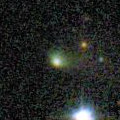
|
Now it is 16.9 mag (Nov. 27, Toshihiko Ikemura, Hirohisa Sato). It continued brightening even after the perihelion passage. But it will be fading after this, and it will be fainter than 18 mag in January.
Date(TT) R.A. (2000) Decl. Delta r Elong. m1 Best Time(A, h)
Dec. 25 1 5.76 -10 52.6 3.061 3.333 97 17.5 18:50 ( 0, 44)
Jan. 1 1 10.19 -10 0.2 3.196 3.374 91 17.7 18:29 ( 1, 45)
|

|
It brightened up to 11.6 mag in winter (Feb. 18, Thomas Lehmann). Now it is fading. It has already faded down to 16.6 mag (Nov. 23, Thomas Lehmann). In the Southern Hemisphere, it stays observable in good condition after this. In the Northern Hemisphere, it will never be observable after this.
Date(TT) R.A. (2000) Decl. Delta r Elong. m1 Best Time(A, h)
Dec. 25 1 7.14 -58 4.7 4.855 4.732 77 17.5 18:51 ( 0, -3)
Jan. 1 1 5.49 -56 16.7 4.975 4.794 73 17.6 18:29 ( 1, -1)
|

|
Now it is 17.2 mag (Dec. 10, Toshihiko Ikemura, Hirohisa Sato). It will be observable at 17 mag in good condition in spring.
Date(TT) R.A. (2000) Decl. Delta r Elong. m1 Best Time(A, h)
Dec. 25 13 26.08 -7 45.7 4.964 4.724 70 17.7 5:35 (327, 41)
Jan. 1 13 30.21 -8 11.8 4.856 4.722 76 17.6 5:37 (335, 44)
|

|
Now it is 18.7 mag (Oct. 14, Catalina Sky Survey). In the Northern Hemisphere, it stays observable at 17 mag in good condition from November to December. It locates low in the Southern Hemisphere.
Date(TT) R.A. (2000) Decl. Delta r Elong. m1 Best Time(A, h)
Dec. 25 1 57.71 27 42.8 1.349 2.055 122 17.6 19:41 ( 0, 83)
Jan. 1 1 50.78 25 44.1 1.400 2.011 113 17.7 19:07 ( 0, 81)
|
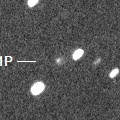
|
Now it is 17.1 mag (Nov. 28, Toshihiko Ikemura, Hirohisa Sato). It will be fainter than 18 mag in January.
Date(TT) R.A. (2000) Decl. Delta r Elong. m1 Best Time(A, h)
Dec. 25 9 13.29 20 13.0 1.563 2.389 138 17.6 3:00 ( 0, 75)
Jan. 1 9 7.86 19 29.5 1.545 2.426 146 17.7 2:27 ( 0, 74)
|

|
Now it is 17.2 mag (Dec. 15, ATLAS-MLO, Mauna Loa). It is observable at 17 mag in good condition from winter to spring.
Date(TT) R.A. (2000) Decl. Delta r Elong. m1 Best Time(A, h)
Dec. 25 10 6.90 -28 1.1 1.961 2.394 103 17.8 3:53 ( 0, 27)
Jan. 1 10 11.81 -28 22.7 1.884 2.384 108 17.6 3:31 ( 0, 27)
|
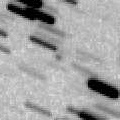
|
Now it is 18.5 mag (Nov. 27, Catalina Sky Survey). It is expected to brighten up to 13.5 mag from June to July. It is observable only in the Southern Hemisphere at the high light. In the Northern Hemisphere, it is observable only until March when it brightens up to 16.5 mag.
Date(TT) R.A. (2000) Decl. Delta r Elong. m1 Best Time(A, h)
Dec. 25 1 25.03 20 8.4 2.070 2.624 113 17.8 19:09 ( 0, 75)
Jan. 1 1 18.28 16 59.4 2.122 2.546 104 17.7 18:35 ( 0, 72)
|

|
First return of a new periodic comet which brightened up to 16.5 mag in 1997. It has not been observed yet in this return. It is expected to be observable at 17 mag in good condition from January to March. But actually, it is not detected, fainter than 21.5 mag (Nov. 29, Takaaki Oribe).
Date(TT) R.A. (2000) Decl. Delta r Elong. m1 Best Time(A, h)
Dec. 25 8 58.35 29 11.0 1.411 2.273 142 17.9 2:45 ( 0, 84)
Jan. 1 8 57.85 28 52.9 1.340 2.244 149 17.7 2:17 ( 0, 84)
|
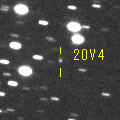
|
Now it is 17.7 mag (Dec. 2, Toshihiko Ikemura, Hirohisa Sato). It is observable at 18 mag in good condition in winter.
Date(TT) R.A. (2000) Decl. Delta r Elong. m1 Best Time(A, h)
Dec. 25 8 2.49 3 1.0 4.362 5.212 146 17.9 1:49 ( 0, 58)
Jan. 1 7 59.84 2 59.4 4.323 5.218 152 17.9 1:19 ( 0, 58)
|

|
Now it is 17.5 mag (Nov. 13, D. Buczynski). Fading slowly. In the Northern Hemisphere, it stays observable in good condition for a long time. It is not observable after this in the Southern Hemisphere.
Date(TT) R.A. (2000) Decl. Delta r Elong. m1 Best Time(A, h)
Dec. 25 16 52.12 49 26.2 6.437 6.256 75 17.9 5:35 (230, 35)
Jan. 1 16 55.71 50 8.4 6.439 6.292 77 17.9 5:37 (230, 39)
|
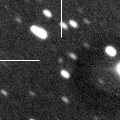
|
Now it is 17.1 mag (Nov. 28, Toshihiko Ikemura, Hirohisa Sato). It will brighten up to 14 mag from 2024 to 2025.
Date(TT) R.A. (2000) Decl. Delta r Elong. m1 Best Time(A, h)
Dec. 25 7 32.72 -31 30.8 8.156 8.716 121 18.0 1:20 ( 0, 23)
Jan. 1 7 30.23 -31 44.4 8.088 8.678 124 17.9 0:50 ( 0, 23)
|

|
Peculiar asteroid moving along a cometary orbit. It is observable at 17.5 mag in good condition in January.
Date(TT) R.A. (2000) Decl. Delta r Elong. m1 Best Time(A, h)
Dec. 25 7 51.11 -7 6.1 1.176 2.039 141 18.3 1:39 ( 0, 48)
Jan. 1 7 14.99 -3 38.5 1.077 2.000 152 17.9 0:36 ( 0, 51)
|
|
![]()
 C/2020 F7 ( Lemmon )
C/2020 F7 ( Lemmon ) 52P/Harrington-Abell
52P/Harrington-Abell 10P/Tempel 2
10P/Tempel 2 C/2019 O3 ( Palomar )
C/2019 O3 ( Palomar ) 430P/2021 Q2 ( Scotti )
430P/2021 Q2 ( Scotti ) 284P/McNaught
284P/McNaught 193P/LINEAR-NEAT
193P/LINEAR-NEAT 230P/LINEAR
230P/LINEAR C/2020 S4 ( PanSTARRS )
C/2020 S4 ( PanSTARRS ) 274P/Tombaugh-Tenagra
274P/Tombaugh-Tenagra C/2019 T2 ( Lemmon )
C/2019 T2 ( Lemmon ) C/2019 T3 ( ATLAS )
C/2019 T3 ( ATLAS ) 422P/2021 L1 ( Christensen )
422P/2021 L1 ( Christensen ) C/2020 U4 ( PanSTARRS )
C/2020 U4 ( PanSTARRS ) C/2020 F2 ( ATLAS )
C/2020 F2 ( ATLAS ) 81P/Wild 2
81P/Wild 2 P/2021 Q5 ( ATLAS )
P/2021 Q5 ( ATLAS ) 119P/Parker-Hartley
119P/Parker-Hartley C/2021 D2 ( ZTF )
C/2021 D2 ( ZTF ) C/2018 N2 ( ASASSN )
C/2018 N2 ( ASASSN ) 28P/Neujmin 1
28P/Neujmin 1 15P/Finlay
15P/Finlay C/2021 K1 ( ATLAS )
C/2021 K1 ( ATLAS ) C/2019 N1 ( ATLAS )
C/2019 N1 ( ATLAS ) 99P/Kowal 1
99P/Kowal 1 (3200) Phaethon
(3200) Phaethon 241P/LINEAR
241P/LINEAR C/2021 U5 ( Catalina )
C/2021 U5 ( Catalina ) C/2021 T2 ( Fuls )
C/2021 T2 ( Fuls ) P/1997 B1 ( Kobayashi )
P/1997 B1 ( Kobayashi ) P/2020 V4 ( Rankin )
P/2020 V4 ( Rankin ) C/2019 K7 ( Smith )
C/2019 K7 ( Smith ) C/2021 G2 ( ATLAS )
C/2021 G2 ( ATLAS ) 2021 WT6
2021 WT6![]()








































































